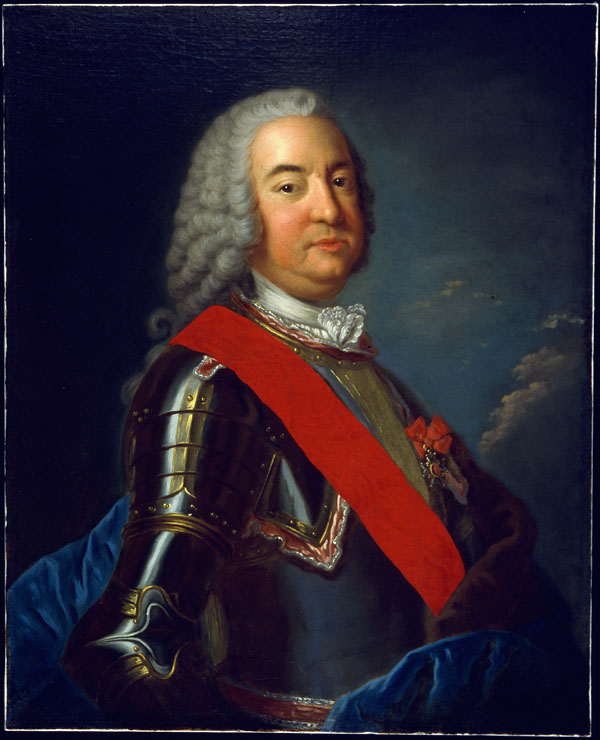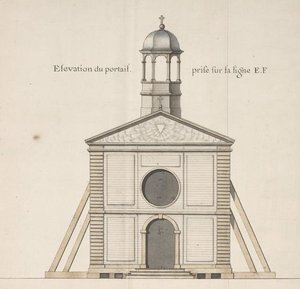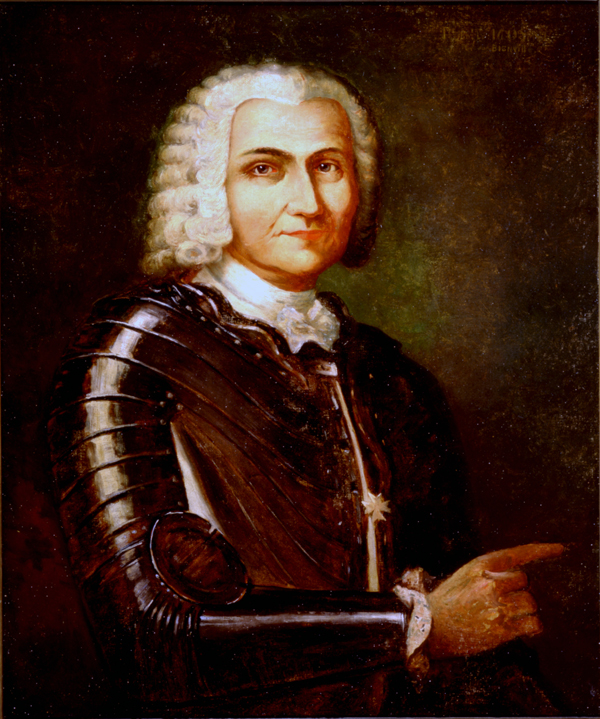275th Anniversary: Tricentennial of New Orleans
As the Vidrine Family in LA celebrates the 275th anniversary of Jean-Baptiste Lapaise de Védrines’ departure from France and arrival in LA in 2018, the City of New Orleans is celebrating its Tricentennial. As can be imagined, there are many connections between these two important anniversaries.
300 years ago – in 1718 – New Orleans was founded by Jean Baptiste Le Moyne de Bienville on the highest ground 100 miles from the mouth of the Mississippi River on its east bank and
was centered around the Place d’Armes, which is now Jackson Square. He named the new settlement for Philippe II, the Duke of Orléans. A few years later, New Orleans became the capital of the French colony. Bienville’s tenure as Governor of New Orleans was a difficult one. Having resided in Louisiana for thirty-six years, Bienville finally submitted his letter of resignation to the Minister of Marine in 1742.
After several months of delay, the Royal Ship, the Charente departed Rochefort, France on January 1, 1743 with Bienville’s replacement – the Marquis Pierre de Rigaud de Vaudreuil de Cavagnial. Also aboard the Charente was Jean-Baptiste Lapaise de Védrines, an Officer of the French Marines who was commissioned to serve the Louisiana  Territory under the new Administration of Governor Vaudreuil. They banked at La Balize, the fort at the mouth of the Mississippi River, on May 8, 1743 and arrived in the city of New Orleans a few days later, 25 years after the young city was founded.
Territory under the new Administration of Governor Vaudreuil. They banked at La Balize, the fort at the mouth of the Mississippi River, on May 8, 1743 and arrived in the city of New Orleans a few days later, 25 years after the young city was founded.
Pierre de Rigaud de Vaudreuil would serve as French governor of Louisiana from 1743 until 1753. As Carl Brasseaux writes:
“He was popular with the upper-class colonists and French officials for his elegant manners. He frequently sponsored balls, dinners, and other social events, helping to ease factions among the colony’s residents.” (Carl Brasseaux “Pierre Rigaud Cavagnial de Vaudreuil” knowlouisiana.org Encyclopedia of Louisiana. Ed. David Johnson. Louisiana Endowment for the Humanities, 4 Aug 2011. Web. 22 Jan 2018.)
Brasseaux continues:
“When the couple arrived in New Orleans on May 10, 1743, Vaudreuil found the colony plagued by security problems, many of which were related to the onset of the War of Austrian Succession in 1740. Louisiana’s garrison was inadequate for colonial defense and the British had succeeded in gaining the allegiances of several Native American chiefs, on whom the colonists had depended for protection. Vaudreuil nevertheless managed to solidify France’s Native American alliances in Louisiana. He developed a particularly strong and useful relationship with the renegade Choctaw chief, Soulier Rouge, and subsequently persuaded the Choctaw to destroy an English trading expedition. Vaudreuil purchased a large plantation on the shore of Lake Ponchatrain in 1743. With a vested interest in improving the colony’s economy, he encouraged the production of indigo. He also ignored smuggling with Louisiana’s Spanish neighbors in order to provide colonists with a greater variety of supplies. These and other policies helped bringing a modicum of prosperity to Louisiana in the mid-1740s.” (Carl Brasseaux “Pierre Rigaud Cavagnial de Vaudreuil” knowlouisiana.org Encyclopedia of Louisiana. Ed. David Johnson. Louisiana Endowment for the Humanities, 4 Aug 2011. Web. 22 Jan 2018.)
Having arrived with Governor Vaudreuil in New Orleans, it was under him that Jean-Baptiste Lapaise de Védrines would serve as a lieutenant in the garrison of French Marines stationed in the city. Unfortunately, at this point we do not yet know much about the 8 years of Jean-Baptiste Lapaise de Védrines’ service in New Orleans. We do know, however, that he would depart New Orleans two years before Governor Vaudreuil was recalled to France. In a letter sent to the Minister of the French Marine on May 25, 1751, Governor Vaudreuil noted that Jean-Baptiste Lapaise de Védrines and several other Marines had served in New Orleans “for several years” and appointed them to fill the vacant places of second ensigns at the Fort de Chartres, IL (AN Col, C-13 A35 f. 143). So just as he arrived in New Orleans with the new Administration of Vaudreuil, Jean-Baptiste Lapaise de Védrines was sent to serve at Ft. Chartres in IL with the new Administration of Commandant Jean Jacques MaCarty Mactigue. Jean-Baptiste Lapaise de Védrines was in IL by July 1751, so he most likely departed New Orleans the spring of 1751 in the special convoy that headed up the Mississippi that year. Chevalier Jean Jacques MaCarty Mactigue departed New Orleans in the fall convoy and arrived as the Commandant of Fort Chartres later that year in December of 1751.
This is an interesting description of the city of New Orleans by a French Marine, Jean-Benard Bossu (1720-1792), who arrived in New Orleans about the same time Jean-Baptiste Lapaise de Védrines was leaving. It gives an indication of the life of the city 25 years after it was founded, as it was when Jean-Baptiste Lapaise de Védrines arrived and during the years he lived there:
“The city of New Orleans is situated on the banks of the Mississippi, one of the greatest rivers of the world, since it flows through more than twenty-four hundred miles of known country. Its pure and delicious waters serve a country of an hundred and twenty miles, in  the middle of which are a number of homes which present a delightful spectacle on both banks. The owners of these homes enjoy in abundance all the pleasures of the chase, of fishing, and of all the other delicacies of life.
the middle of which are a number of homes which present a delightful spectacle on both banks. The owners of these homes enjoy in abundance all the pleasures of the chase, of fishing, and of all the other delicacies of life.
In New Orleans the streets are well arranged and today this city is greater and more thickly populated than it has ever been. Its inhabitants are of four sorts, Europeans, Americans, Africans or negroes, and Mongrels. The Mongrels are those who were born of Europeans and of those natives of the country whom we call savages.
They describe Creoles as those who were born of a Frenchman and a Frenchwoman, or a Frenchman and a European.
The Creoles are in general very brave, grand, and haughty. They are disposed towards the cultivation of the arts and sciences, but as they do not have the opportunity of following the teachings of good masters here, the rich and well meaning parents do not hesitate to send their children to France as the first school of everything in the world. They do this particularly in order that the respective sexes might properly learn their positions in the world.
New Orleans and Mobile are the only cities where they do not speak in patois. Here the French that is spoken is correct. The negroes are brought from Africa. They are used in cultivating the soil, which is excellent for the cultivation of indigo, tobacco, rice, maize, and of sic sugar cane, for all of which there are very well managed plantations.
The Capuchins were the first priests to arrive in New Orleans. They came as missionaries in 1723. Their superior was the first Curé of the Parish, and these good religious devoted themselves solely to the affairs of their ministry.
 The Jesuits, two years later, established themselves in Louisiana; these splendid diplomats discovered the secret of exploiting the rich land of the colony, which they obtained through their political moves.
The Jesuits, two years later, established themselves in Louisiana; these splendid diplomats discovered the secret of exploiting the rich land of the colony, which they obtained through their political moves.
The Ursulines came about the same time as the Jesuits, or a little later. These pious women, whose zeal is assuredly most praiseworthy, devoted themselves to the education of the young girls. They also received the orphans into their community, and for this service the King gave them a pension of fifty crowns for each orphan. They were also in charge of the military hospital.
When the colony was established, a tribe known as the Chitimachas lived on a stream to the west of New Orleans, which bore their name.”
(Travels through that part of North America formerly called Louisiana, Jean Benard Bossu, 1771, pp. 194-195)

